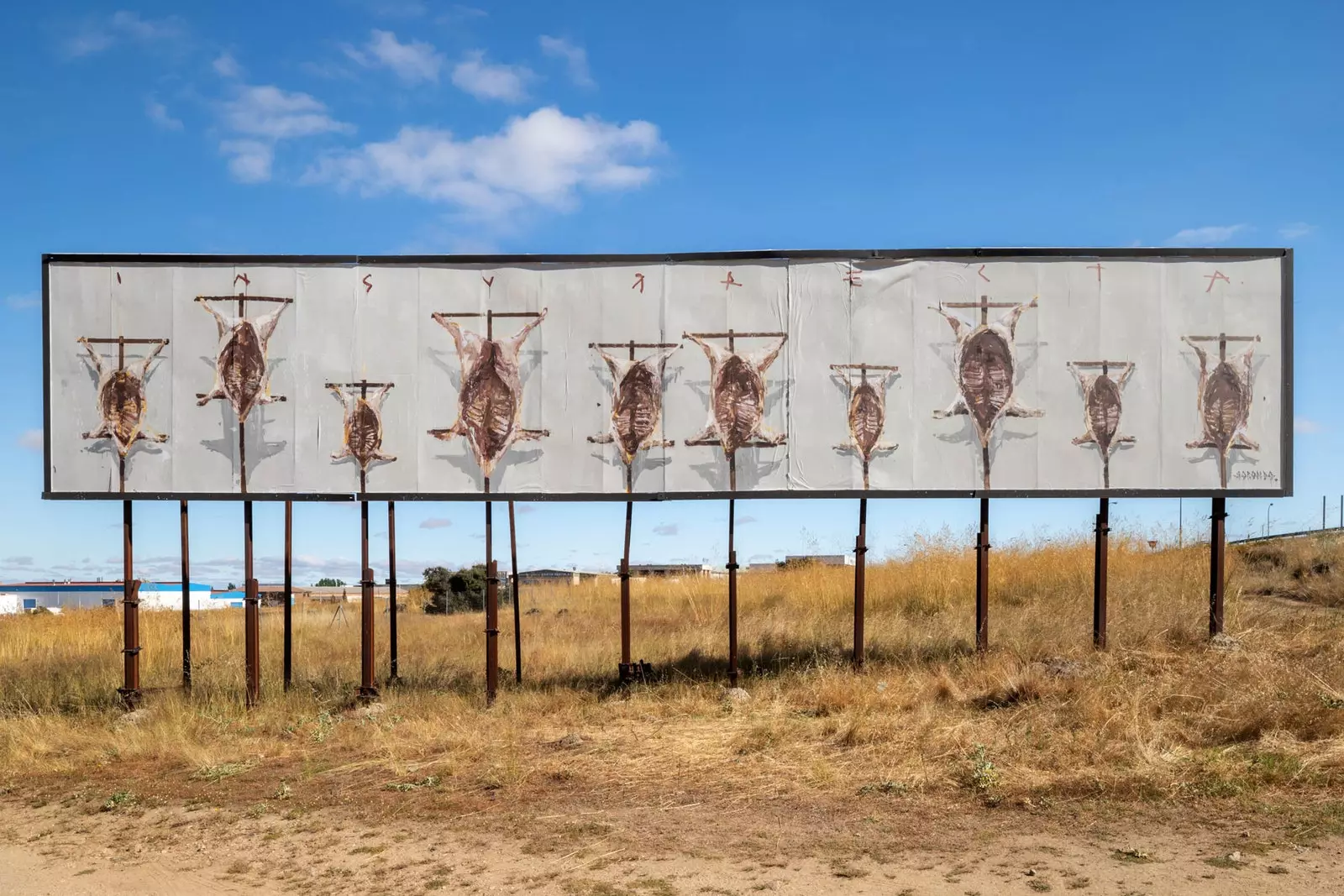
Insurrecta: the exhibition of the artist Gonzalo Borondo in Segovia
An open-air museum, an urban landscape to reflect on , a memory from 500 years ago that forms part of Segovian history... All this –and much more– is Insurrecta, the new project of the artist Gonzalo Borondo.
Together with the Segovia City Council and in collaboration with Acción Cultural Española (AC/E), Borondo has configured an urban tour using the billboards of the city of Segovia.
A total of 32 pieces spread over 17 freely accessible locations that turn the city and its surroundings into an art gallery that commemorates the V centenary of the community uprising in the city.
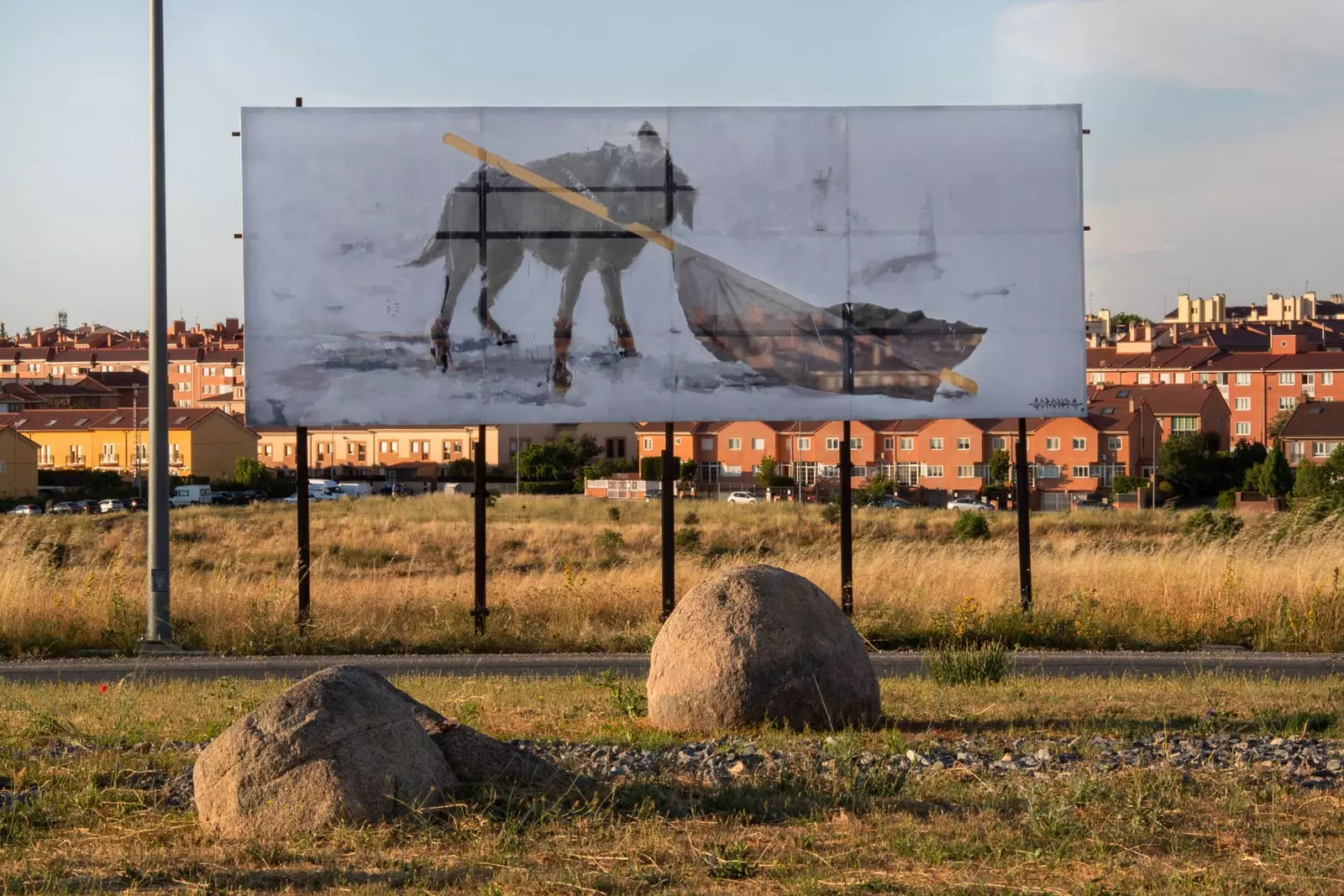
'Insurrecta': an open-air museum in Segovia
INSURRECTA: HISTORY, REFLECTIONS AND "NO PLACES"
Insurrecta is made up of five chapters –The stranger, The background, The contempt, The heads and Epilogue– that intend to generate in the visitor reflections on the past of the city and investigate the cyclical substratum of history, taking as its axis the community revolt.
On foot, by car or by bike, touring the different settings where Insurrecta is located means discover a lesser-known visual space in Segovia, promoting the visibility of the so-called "No Places".
The works are presented in a code of metaphor and they suggestively weave historical facts with a personal and critical reading towards our contemporaneity.
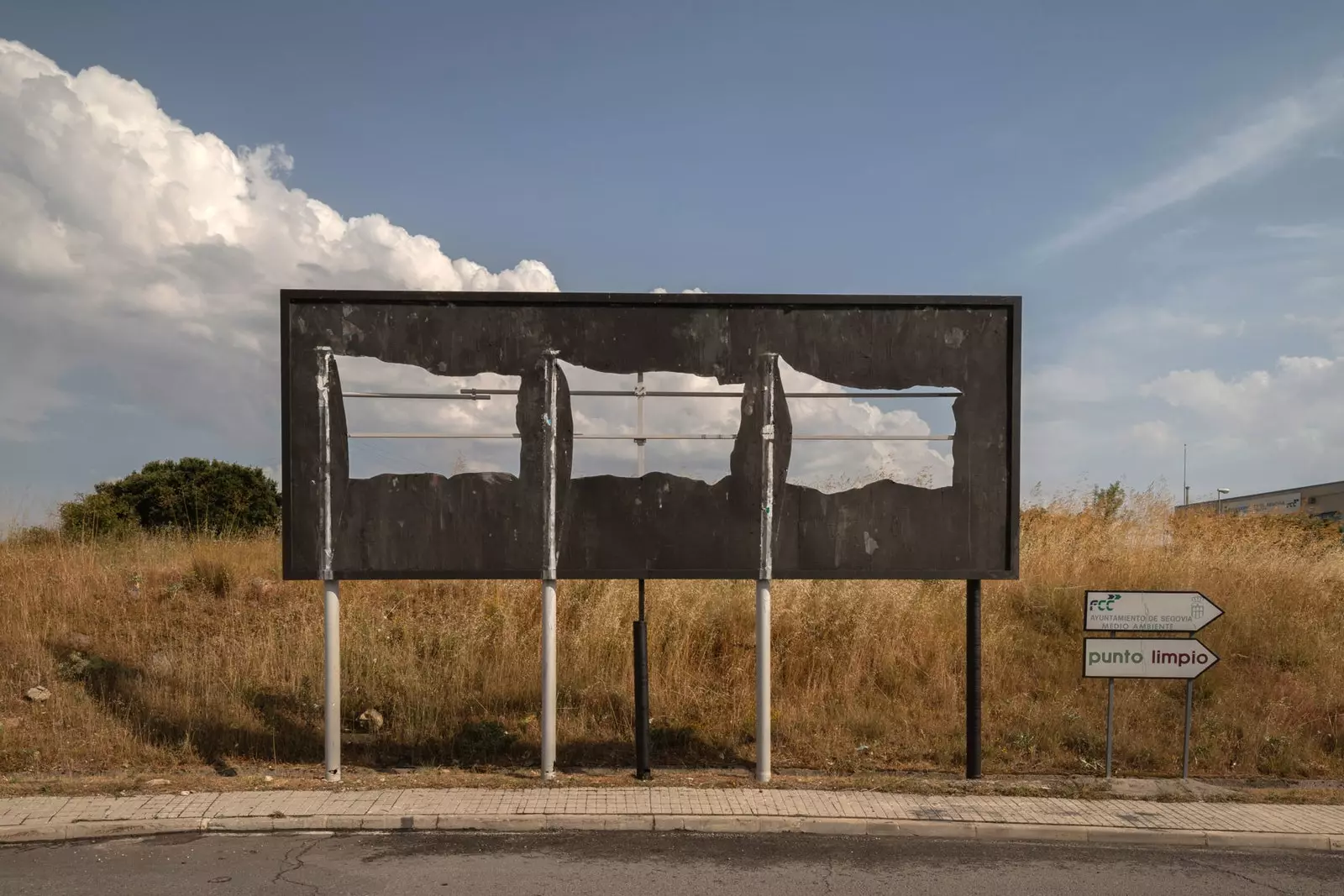
Interpolygon road / Clean point roundabout
A BEFORE AND AFTER IN SEGOVIA AND IN SPAIN
Gonzalo Borondo is one of the contemporary Spanish artists with the greatest international projection and also a world reference in carrying out works in public spaces.
Born in Valladolid, Borondo returns to reside in Segovia after more than 10 years developing his artistic career outside of Spain.
It was in 2019 when the artist was commissioned by the Department of Culture to create an artistic project to commemorate the 500th anniversary of the community uprising in Segovia.
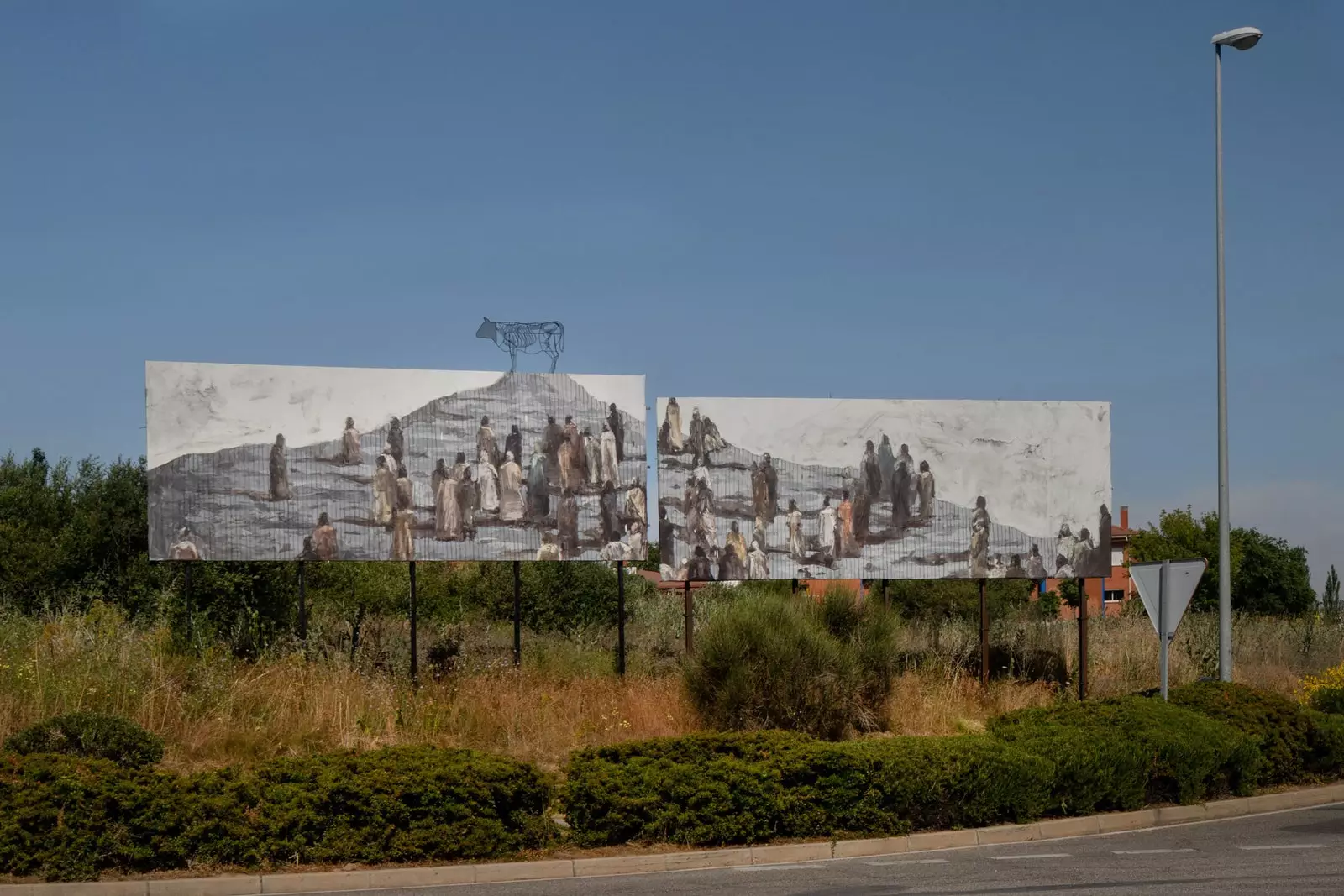
Roundabout Avenida Vicente Aleixandre with CL-601a (Carretera de Valladolid)
This is how Insurrecta was born, which took its first steps through a research phase: Borondo pays homage to the Comuneros through historical texts, delving into the idea of Revolt and extending the analysis of power struggles beyond the established framework.
This analysis was applied to other fronts such as: humanity facing nature, the discourse of the urban in the natural landscape, the effects of imposition on society, the reappropriation of spaces by different agents or changes in the status quo.
The community uprising meant a before and after both in political life and in social life in Spain , especially for Castile, having Segovia as one of the main scenes of the revolt.
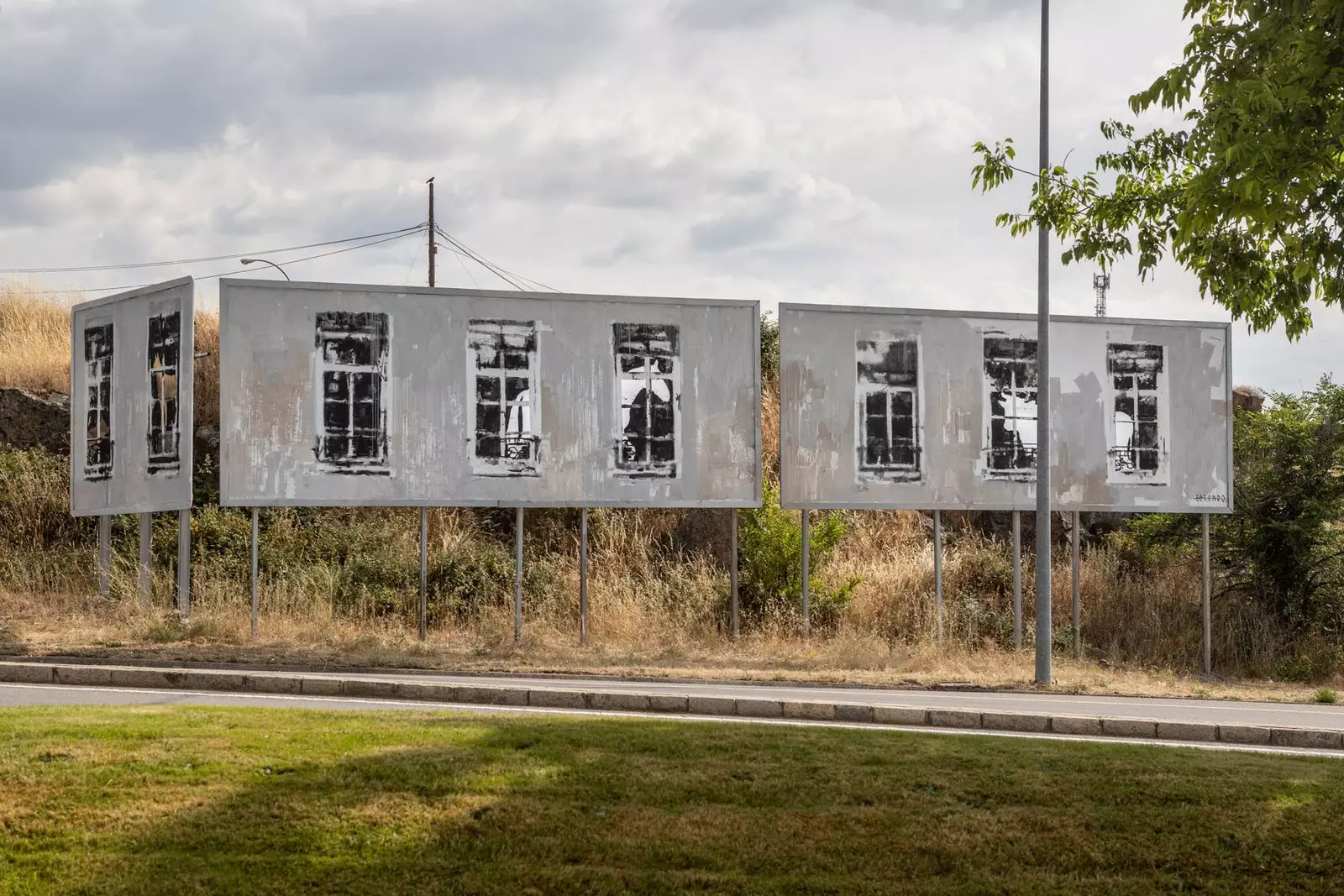
Concilium: union. On the San Rafael Highway / Exit to AP-61
The texts are signed Charles Rod and harbor ideas like these:
"Concilium: union. The population, a dancing forest, takes to the streets against Caesarism. Mourning gallows in the Plaza Mayor, San Martín, Santa Eulalia. Aldermen forcefully throw a jar on the ground. Neighbors set fire to a bundle of straw. "The law, that's what's important." Smoke".
"Insurrection, from insurrectum, supine from insurgere (try to get up) formed by in- (beginning of an action) and surgere (to arise) and this by sub- (from below to above) and regere (to direct), from which rex, regis (king), in Germanic reiks (powerful) from which it derives rich. And so life, so language".
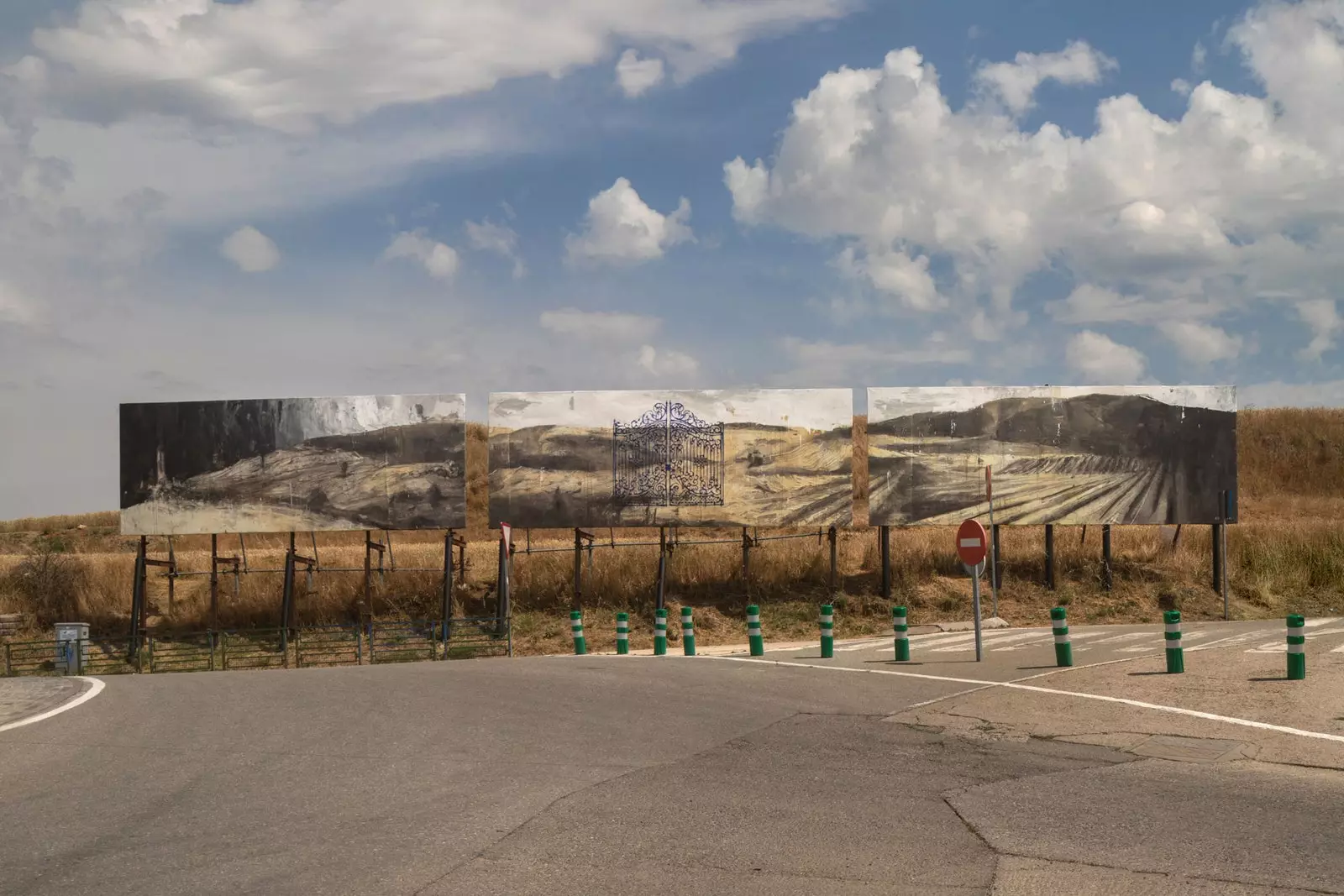
"Intro: a stranger arrives, the alien, is the stranger.« But who is he? »Asks the people"
"History is a power struggle between impositors and subjects, beyond our periodic disputes. The conflict begins with the need of all species for a limited space, where to exist and subsist. This has prompted us to subdue the environment," explains Gonzalo Borondo.
And he continues: "I have represented the communal uprising as that group of beings subjected by the human being, loyal beings who have accompanied our journey and who one day rise up against his domestic character and claim what is also theirs ".
"We often forget that we are part of a living nature, that only in rare moments do we realize how vulnerable we are to it and that this good that we mistreat so much for so many cultures has been sacred", concludes the artist.
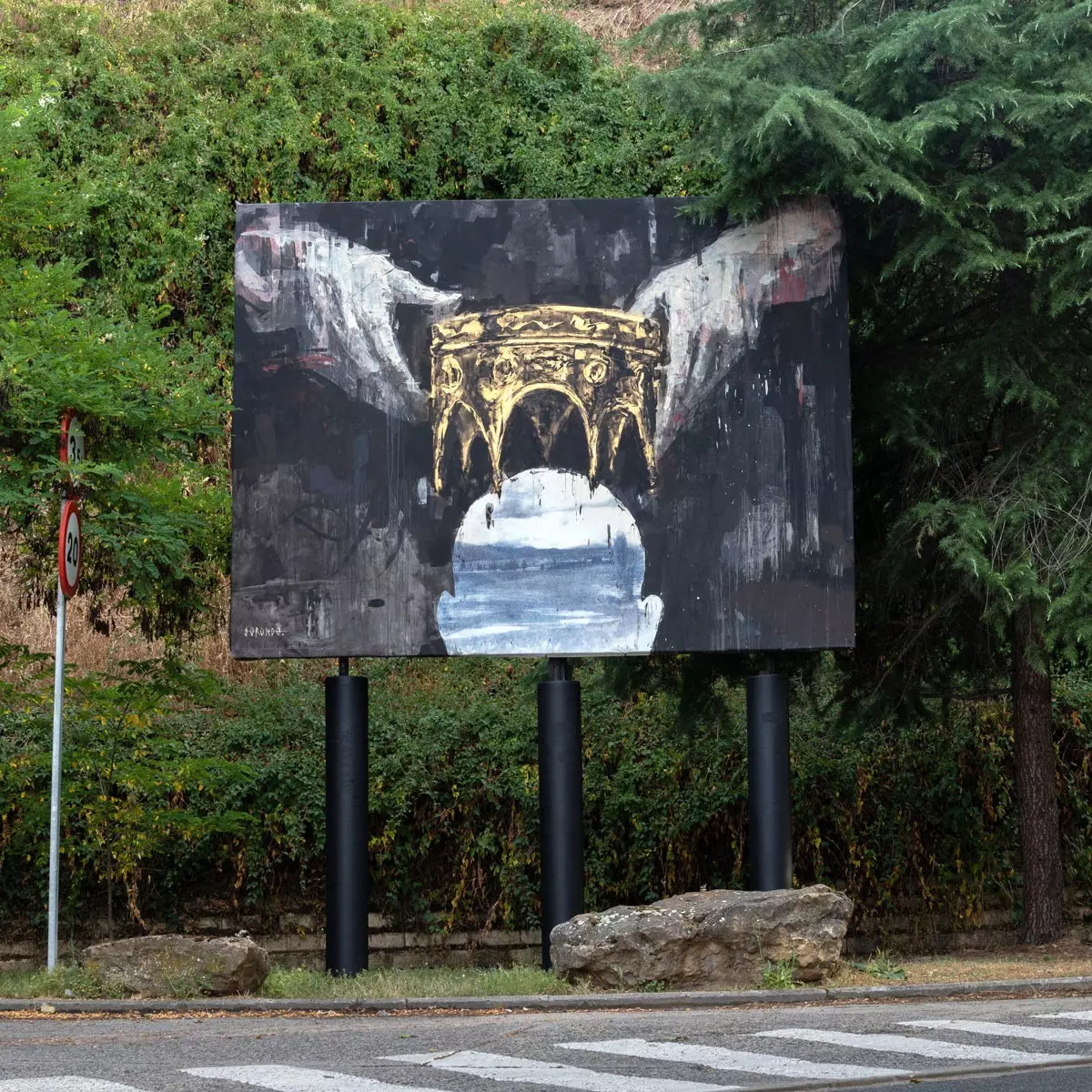
April 3 Street / Ctra. Madrona
THE WORK AS AN EXPERIENCE IN ITSELF
Insurrecta seeks to awaken in the visitor an exercise in critical thinking and reflection through the interaction between visual metaphors and historical narrative.
In addition, the choice of support is not accidental, since Borondo connects the reappropriation of land by comuneros with the reappropriation of art on public billboards.
The project set contains different techniques; although all the works present a common matrix: the monotype, a technique that uses the tools of engraving but generating a single copy, with which Borondo wants to honor the informative intention of Goya's series of engravings The Caprices and The Disasters.
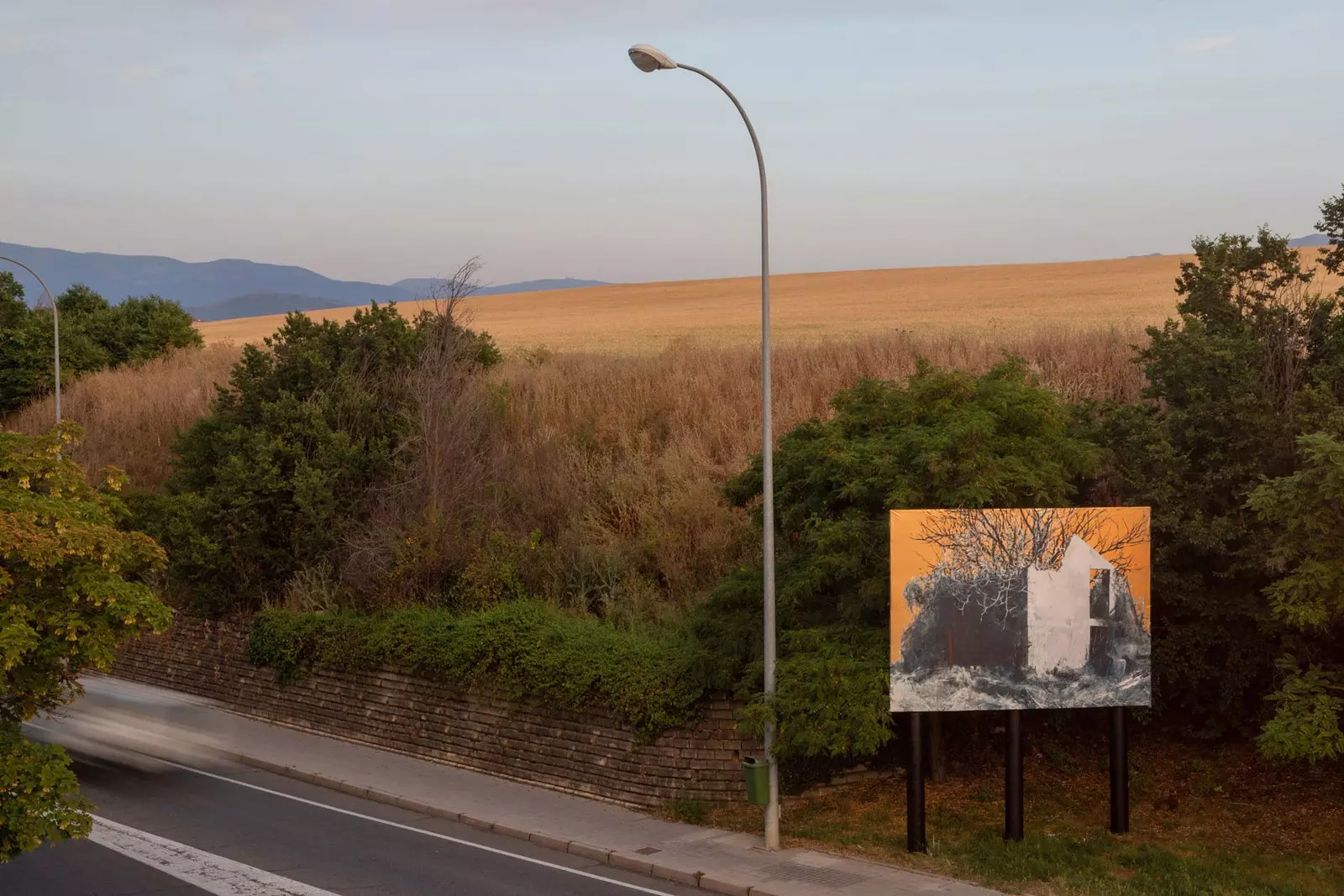
On April 3rd Street
The artist applies various plastic techniques that condense or expand the content of the works beyond the support itself, thus making each work an experience in itself.
For example, iron sculptures and micro-perforated panels overflow some of the frames, the cyanotype seeks an oneiric realism typical of the first photographs and the use of animation in others expands the project beyond the original support.
And of course, the juxtaposition of the fence itself with its surroundings he plays with the perspectives and landscapes of the area, becoming part of the work.
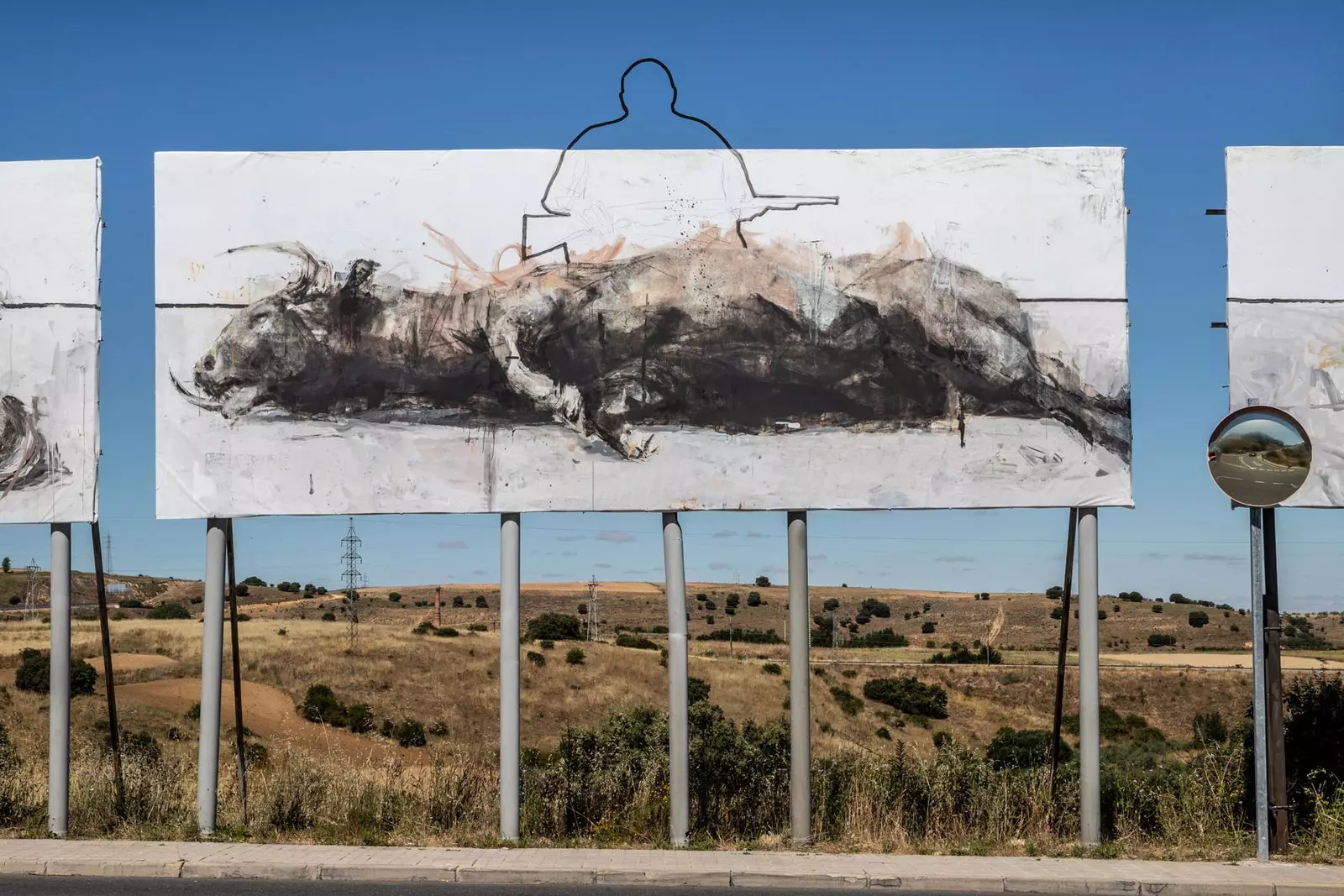
Guadarrama Street
**A MAP OF "NO PLACES" **
Beyond commemorating the community revolts, the nature of the project involves transferring art to easily accessible public spaces, democratizing the enjoyment of the work and locating forgotten areas, the "No Places", on the tourist map of the city.
Thus, visitors have a map of the 17 locations in which we find a story of the revolt for each of the interventions.
At each stop there a mark with the perspective designed for contemplation, although you are invited to take it with the greatest freedom.
This offers total flexibility when designing the route to follow, and the means with which to carry out the route.
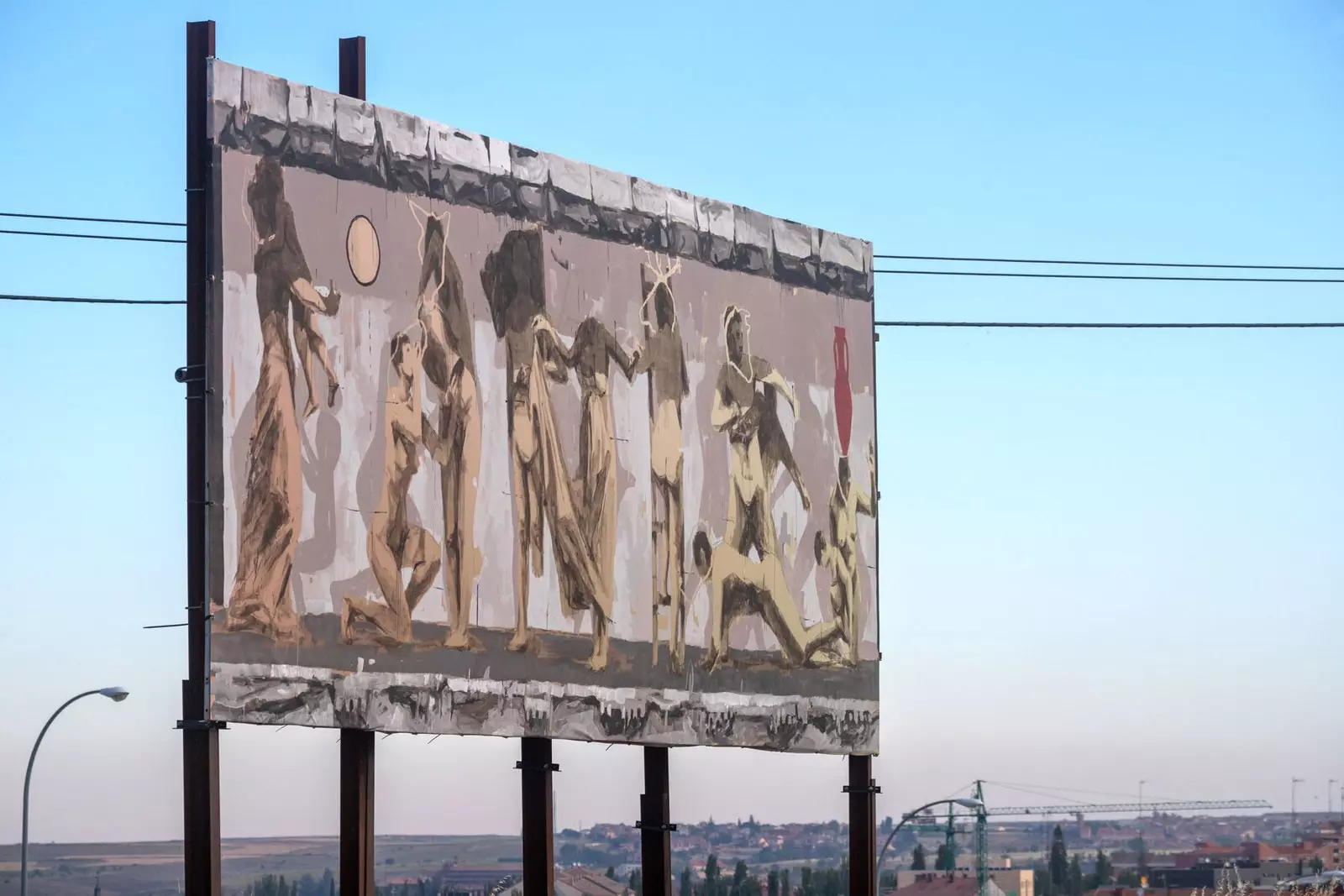
San Rafael road, next to gas station
GONZALO BORONDO
Gonzalo Borondo's work connects figurative painting and installations with their own physical and psychological contexts, and all his work is guided by his will to understand the human being in his most symbolic complexities.
Borondo's works break the limit of what is imposed by the inertia of a place, while respecting it and paying tribute to its legacy.
Human contradictions and the symbiosis of images opposites are part of the personal language of the artist, present in all his works.
Among his most recent projects, the following stand out: intervention in the Chartrons temple in Bordeaux within the framework of the cultural cycle Liberté! 2019; in the Contemporary Museum of Rome (2018-2019); in the Festival of Musiques Interdites de Marseille ; in the Urban Nation Contemporary Art Museum of Berlin; and in the altrove-festival (Italy).
He has starred in solo exhibitions in Madrid, Paris and London , and has murals in many cities like kyiv, Lisbon, Milan, Barcelona, Honolulu, New Delhi, Copenhagen, Atlanta, Rome, Istanbul, Madrid or Las Vegas, among many others.
The project can be visited for free until April 23, 2021.
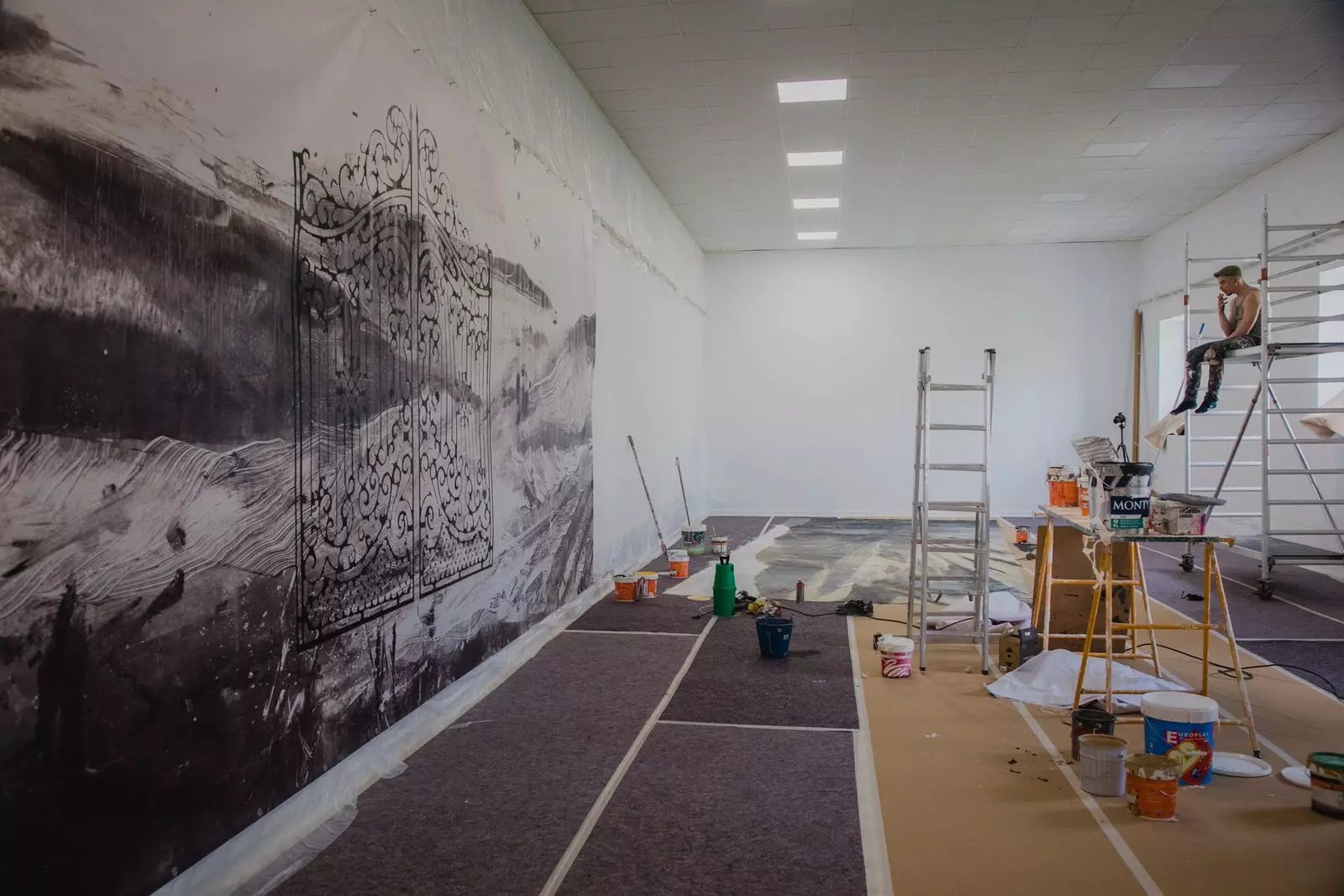
Gonzalo Borondo in his workshop
